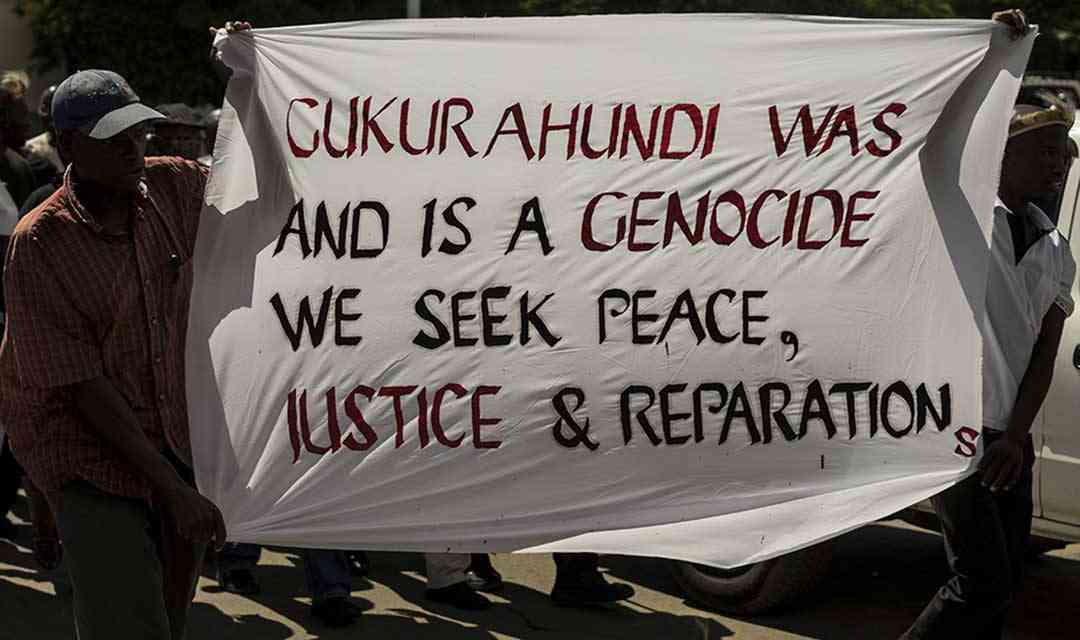
THE idealised landscape of Tsitsi Nomsa Ngwenya’s new novel, A Portrait of Emlanjeni, is animated by the spirit of the people, their community ties and abiding regard for tradition. Ngwenya brings the indigenous and official justice systems in conversation, broadening them to make space for women.
Tsitsi Nomsa Ngwenya’s fourth book, A Portrait of Emlanjeni, was published on March 21 by UK-based Carnelian Heart Publishing. The novel, Ngwenya’s first in English, pays homage to an idealized landscape, its community ties and abiding attachment to tradition. Ngwenya’s teenage protagonists, Khethiwe, a survivor of sexual violence, and Zanele, who falls pregnant from a toxic relationship, embody women’s struggles. In the case of Khethiwe, the struggle is symbolically acted upon by a clash between the indigenous and the adopted colonial justice delivery system.
Ngwenya, a town planner by day, wrote her first short story collection, The Fifty Rand Note and Other Stories, under the stimulus of hyperinflation in 2009. With her investments burnt and her business on shifting ground, she decided to make a silver linings playbook of it all with the 14-piece book, first published in 2017, and now awaiting reissue this year by Carnelian Heart Publishing. Ngwenya’s culturally themed Ndebele duology, Izinyawo Zayizolo (2016) and Zalabantu Ziyebantwini (2022) came out through Barbara Makhalisa Nkala, the first published woman writer in the language.
While inspiration from Ngwenya’s day job seems merely contingent in The Fifty Rand Note, she may have leaned into her urban-planning imagination to achieve the idyllic tableau that is Izinyawo Zayizolo. Literally translated Footprints of Yesterday but published as A Portrait of Emlanjeni, the book draws on Ngwenya’s judicial exposure to detail a battle of laws.
A self-aware writer of decolonial intent, Ngwenya’s books have travelled well, prompting researcher engagement in Zimbabwe, South Africa, the US and other parts of the world. She says the occupational hazards of self-publishing, distribution problems and quality issues, have seen her working with foreign publishers and booksellers. “This is because the local bookstores are happier to sell school textbooks not novels, and very reluctant to order other literature books,” Ngwenya says in an interview with This Is Africa.
The homely tinge of memory
Ngwenya channels her nostalgia for an idyllic childhood in Izinyawo Zayizolo retaken in English, as A Portrait of Emlanjeni. She remembers in an interview published in This Is Africa last year growing up when children were raised alike, help was passed around, manners were cultivated early, chores were shared and so on.
The idealised childhood is, by extension, the childhood of Matobo district, an important spiritual centre in Zimbabwe, and the childhood of the nation. In Ngwenya’s book, the village retains its qualities of unconditional humanity. Homecoming adventurers, immersed in crime and degeneracy elsewhere, respectfully blend into the community code upon return. Romantic imagination is, however, undermined within the book itself as the culture has been contaminated; the nation has failed the test of innocence, with attempted genocide stalking social memory during the drive to Emlanjeni; and the olden justice system exists in name, throttled by unholistic law courts.
- ‘Poverty has destroyed Zim’s reading culture’
- Ngwenya revisits past under erasure in A Portrait of Emlanjeni
- Celebrated poet Chiyangwa dies
- Portrait of Emlanjeni: A review by Memory Chirere
Keep Reading
It has been said that in the infinitely divergent characterisation of Kojo Laing’s masterpiece, Search Sweet Country, Accra itself turns out to be the main character. If the same can be said of Ngwenya’s Emlanjeni Village, as editor Tanaka Chidora intimates, it is because Emlanjeni Village is where cross-border adventurers, armed robbers, peasant farmers, sangomas, students, doctors, police officers and so on dissolve their individuality into an overwhelming community spirit.
The decolonial metaphysics of the book may also be a skilled rendering of Ngwenya’s industrial exposures. Her day job is a two-way reimagining of the space between city and village. On one hand, a town planner conceives the enchantment of the village into the banality of the city. On the other hand, she tames “a bush into a town with all networks coming together before people can come in.” The urban village, better known as suburbia, is an artifice but so too is the actual village which is always already the outcome of colonial displacement.
Nostalgia is not just a backward gaze but also negative one. Hopelessly rid of its materials, it creates the beauty of the past out of discontent with the present. A Portrait of Emlanjeni favors the traditional customs and figureheads for a benign rendering and what goes wrong in the book represents the abuses rather than the flaws of indigenous philosophy.
At the centre of these abuses is Sibanda who rapes his own daughter Khethiwe while his wife looks on. Sibanda’s obsession with sex knows no bounds, moral or legal. Following his crime, he uses violence and intimidation, abusing the law further to stay clear of it, and somehow gets away with it. But he knows that indigenous culture will fight back those who wantonly disregard it, so he dabbles in juju to stay untouchable. Apostle Joshua, a Christian variant of Sibanda, is a manipulator of crowds who cuckolds his happy clippers.
But Ngwenya’s village men are not all monsters. Hadebe, intransigent and doctrinaire, progressively shifts towards a humane angle in the case of his pregnant daughter. Sikhwehle is a holy fool, mentally ill and warmly regarded by his people. He gets to be the ladies’ man in his hard-working involvement with every village task including the brewing of rainmaking beer. At gatherings and at the chief’s court, he has an unwritten contract to say the truth that polite society muzzles in the decency of silence.
Nostalgia is not just a backward gaze but also negative one. Hopelessly rid of its materials, it creates the beauty of the past out of discontent with the present. A Portrait of Emlanjeni favors the traditional customs and figureheads for a benign rendering and what goes wrong in the book represents the abuses rather than the flaws of indigenous philosophy.
Chief Mlotshwa is almost too good to be true, wise, listening, benign. He might seem like the junior party, liable to be overwritten in his collaboration with modern courts, but things do not always proceed in one direction. The modern court has the last say on the case of Khethiwe, aborting justice in favor of procedure, but it is the chief who has the last say in an acquitted murder case that must now be returned to the guardians of tradition lest nature avenge herself.
The problem of memory
Emlanjeni, the idealized landscape that gives the book its name, is immersed in the ways of the ancestors. The Ndebele source text, Izinyawo Zayizolo, literally Footprints of Yesterday, pays regard to this preservation of the past. The first sighting of this are the communal ties which still run strong in this community. Just as the child who does not cry dies in the swaddling bands, problems are only terminal for individualist and materialist cultures who hold on to problems like private property – a running censure in the book is that depression is not an African disease. The other sighting is the indigenous religion – the Njelele god of Matobo still has a priesthood waiting on it and fertility rites observed around it by the Emlanjeni community. Importantly for Ngwenya, the other sighting is the indigenous judicial system, although the novelist deliberately portrays it under erasure, its relative merits always already undermined by the modern order.
*To be continued next week.
This book review was first published by Large Paper











